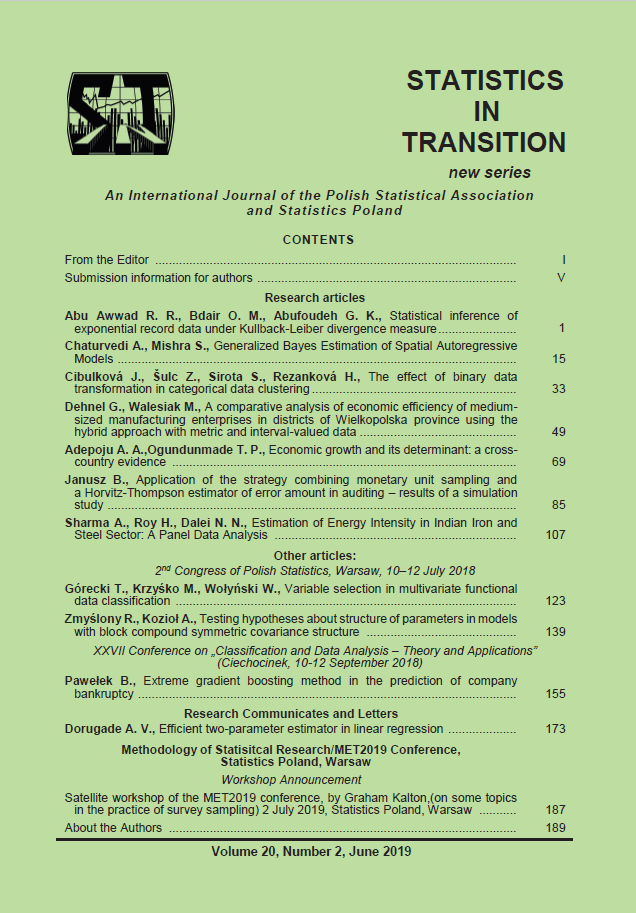ARTICLE
ABSTRACT
India is the world’s third largest consumer of primary energy, which includes fossil fuels like coal, oil, etc. The total primary energy consumption in India in 2015 was 107 Mtoe. India’s total final energy consumption was estimated at 527 Mtoe of which the industrial sectors consumed about 30% (185 Mtoe) in 2013. The Iron and Steel sector is one of the most energy-intensive industries, consuming about 25% of the total industrial energy consumption. The energy consumption in Indian Iron and Steel sector is on the declining trend. It declined from 10 GCal/tcs in 1990 to 6.9 GCal/tcs in 2010–11. On average, iron & steel plants spend about 20-40% of the total manufacturing cost to meet their energy demands. In fact, energy cost is considered as a major factor in pricing of the steel. Energy Conservation Act, 2001 (ECA), and the formulation of Bureau of Energy Efficiency are important initiatives taken up by government in order to reduce energy consumption by various sectors in the Indian economy. Another important initiative is launching of first of its kind market-based mechanism, Perform, Achieve and Trade (PAT) mechanism in 2010 particularly targeting the energy consumption by the industrial sector of the economy. Phase-I for PAT ran from 2012–015 including eight most energy-intensive sectors under Indian Industrial sector, with Iron and Steel sector being a prominent sector. The objective of this paper is to empirically estimate the energy intensity of Indian Iron and Steel sector, also accounting for the impact of ECA and PAT Phase-I in dummy variable form. The results indicate that the decline in energy consumption in this sector until 2011 can also be attributed to Energy Conservation Act implemented in the year 2001 along with other factors. This is empirically confirmed by our results that ECA has a significant impact on reduction of energy intensity of the steel firms. PAT does not seem to have a considerable impact on energy intensity alone but in the years where both PAT and ECA are prevalent, i.e. from 2012 to 2015, there seems to be a significant impact of around 0.050 reduction in energy intensity, as accounted by different models in this paper. There is one more observation from the empirical results that profit margin intensity was found to be negatively related to energy intensity implying more profitable firms invest more in energy efficiency.
KEYWORDS
energy intensity, Indian Iron and Steel sector, Energy Conservation Act, Perform-Achieve-Trade Mechanism, panel data
REFERENCES
BP, (2016). Statistical Review of World Energy.
BHANDARI, DIVITA et al., (2017). The perform, achieve and trade scheme in India: An effectiveness analysis, Renewable and Sustainable Energy Reviews, Elsevier.
BUREAU, E. T., (2017). India’s energy consumption to grow faster than major economies, The Economics Times, Retrieved from https://economictimes.indiatimes.com/industry/energy/oil-gas/indias-energy-consumption-to-grow-faster-than-major-economies/articleshow/56800587.cms.
CENTRE FOR MONITORING INDIAN ECONOMY, CMIE ProwessIQ Database, VERSION 1.81.
CII, (2013). Technology Compendium on Energy saving Opportunities Iron & Steel Sector, Shakti Sustainable Energy Foundation, Bureau of Energy Efficiency, BEE, August.
IEA, (2015). India Energy Outlook, International Energy Agency, World Energy Outlook Special Report, Paris, France
IEA, (2012). Energy Transition for Industry: India and the Global Context, International Energy Agency, Paris, France.
KRISHNAN, S. S. et al., (2013), A Study of Energy Efficiency in Indian Iron and Steel Industry, Shakti Sustainable Energy Foundation, Center for Study of Science, Technology & Policy, December.
KUMAR, ALOK, (2003). Energy Intensity: A Quantitative Exploration for Indian Manufacturing, Working Paper, Indira Gandhi Institute of Development Research, Mumbai.
MINISTRY OF STEEL, (2017). Energy And Environment Management In Iron & Steel Sector, Government of India, Retrieved from, http://steel.gov.in/technicalwing/energy-and-environment-management-iron-steel-sector.
MALAVIKA VYAWAHARE, (2017). India saw largest rise in GHG emissions in 2016 among major emitters, Hindustan Times, New Delhi, Retrieved from https://www.hindustantimes.com/india-news/india-among-highest-greenhouse-gas-emitters-in-2016-big-coal-consumer/story-juJex1dknBvLxmQ275YN0K.html7.
MUKHERJEE, K., (2008). Energy use efficiency in the Indian manufacturing sector: An interstate analysis, Energy Policy, Vol. 36, pp. 662–672.
OAK, HENA, (2017). Factors Influencing Energy Intensity of Indian Cement Industry, International Journal of Environmental Science and Development, Vol. 8 (5), May.
SAHU, SANTOSH, NARAYANAN, K., (2009). Determinants of Energy Intensity: A Preliminary Investigation of Indian Manufacturing Industries”, Paper presented in the 44th Conference of The Indian Econometrics Society, at Guwahati University, Assam, India & Available at, http://mpra.ub.uni-muenchen.de/16606/.
TENG, (2012). Indigenous R&D, technology imports and energy consumption intensity: Evidence from industrial sectors in China, Energy Procedia, Vol. 16, pp. 2019–2026.
